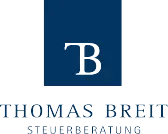You are the proprietor of an oHG (general partnership), KG (limited partnership) or GmbH & Co. KG (limited partnership with a GmbH as general partner) and are looking for ways to optimize the high tax burden on your profits? For exactly this purpose, the option model for partnerships was adopted at the end of May.
In theory, you can use this model to lower the tax burden and benefit from a company pension scheme.
However, is this option model really a good idea or does it also have disadvantages?
I have a very definite view on this: While the option model is well intentioned, it fails to meet its actual objectives and can therefore not be recommended.
In this post, I will explain why this is the case, putting it plainly. You will learn:
- What an option model is
- How you can benefit from it
- What the 7 reasons are that speak against the option model
- What alternative is better suited for your purposes
This post was updated on 17 August 2021.
What is the new option model for partnerships?
The new option model offers partnerships (oHGs, KGs and GmbH & Co. KGs) the option to be taxed like a GmbH (cf. section 1a Corporate Income Tax Act (KStG)). From a legal point of view, this equals a fiscal conversion to a GmbH.
In other words: Company profits are no longer taxed at the personal tax rate of the partners (usually 42% or 45%).
Instead, profits are now subject to trade tax, corporate income tax and, if profits are distributed, capital gains tax.
The option model was passed by the German Bundestag at the end of May 2021 and can be applied for the first time as from January 1, 2022.
Please note: The option model cannot be chosen by sole proprietors or civil law partnerships.
What are the benefits of the option model?
The core idea behind the new option model is to align company taxation across legal forms. The goal is for companies to be taxed (approximately) the same regardless of their legal form.
This brings about two advantages:
Advantage 1: Retained earnings are taxed at 30% only
If you decide in favor of the option model, retained profits are only taxed at 15% trade tax and 15% corporate income tax, as with the GmbH.
Ordinarily, profits of partnerships are always taxed at the personal tax rate of 42% or 45%. In this case, it does not play a role whether the profits were distributed to the partners or remain in the partnership.
This means that the option model allows you to save up to 15% in taxes on retained earnings.
Please note, however: This tax saving is possible not only with the new option model, but also with a much simpler alternative. Further below in this post, I will explain this alternative in more detail.
Advantage 2: The 5 different types of company pension schemes can be applied
After the fictitious conversion of your partnership into a GmbH, you as the managing director are an employee of your company, which means that you can more easily provide for your pension. You are free to use the following options:
- Pension fund (Pensionsfonds):In this case, you pay into a fund that you have selected based on your risk tolerance. Until you retire, your money is saved there and then paid out.
- Staff pension fund (Pensionskasse):This type entails that the money you have paid in is managed by a staff pension fund. Unlike the pension fund, the staff pension fund does not offer any risky investments.
- Direct insurance (Direktversicherung):This insurance is similar to a life insurance. You receive a fixed interest rate and the chance to participate in the surplus.
- Direct provisions for pensions (Pensionszusage):This pension is agreed directly with your company and also paid out by your company. The company consequently enters into a contractual commitment to pay you a pension.
- Benefit fund (Unterstützungskassen):Similar to the above direct pension provisions, this also means that the employer commits to paying the pension. However, in this case the capital is saved and paid out by an external pension provider.
If you are a sole proprietor or owner of a partnership, you are not an employee of your company. Therefore, it is not possible to set up a company pension scheme and many entrepreneurs are thus not sufficiently financially secured in old age.
The 7 reasons speaking against the new option model for partnerships
Unfortunately, the advantages of the option model described above are associated with serious disadvantages. In my opinion, the disadvantages outweigh the potential advantages. Below please find a summary of the 7 biggest disadvantages of the option model:
Reason 1: No tax saving in case of profit distribution
The tax saving of up to 15% stated above only concerns profits that are not paid out to you and remain in the company.
As soon as profits are paid out, the tax advantage turns into a disadvantage: Because of capital gains tax, the profit distribution under the option model lifts your tax rate to a total of 48%.
In the case of a normal partnership, you never pay more than your personal tax rate (42% or 45%) when profit gets paid out.
Reason 2: 7-year freeze period after conversion
In order for the fictitious conversion into a GmbH to become truly tax-neutral, you must observe a seven-year freeze period.
In other words: From a tax point of view, turning back the fiscal conversion or carrying out a new conversion into another legal form should only take place after this period has expired.
If you convert your company before the expiration of the freeze period, the first fiscal conversion is retroactively taxable. In this case, you will probably have to pay thousands of euros in retrospective taxes.
Reason 3: Private withdrawals are no longer possible
In contrast to a conventional partnership, in the case of the option model you can no longer simply withdraw your salary.
You must sign a contract of employment with your company, which will stipulate your exact remuneration.
The disadvantage: Your salary cannot be adjusted to your personal monthly needs (sometimes you take more, sometimes less), but must be approximately the same every month.
Reason 4: Risk of a hidden profit distribution
If you lease a building or equipment to your company, you have to be very cautious with the option model.
Under the option model, the rent paid by your company for the use of the building cannot be determined freely. You must always be guided by the arm’s length principle. In other words: What would be the rental rate for an external third party?
If the rent paid out to you by your company is too high, you could be liable to prosecution for a hidden profit distribution.
Reason 5: Retrospective tax payments when conversion regulations have been violated
The procedure for the fiscal conversion is precisely regulated (cf. Section 20 German Reorganizations Tax Act (UmwStG)).
If you do not comply exactly with the procedure, you may face high payments of retrospective taxes. Furthermore, the fiscal conversion may even become void.
For the fiscal conversion to be legally sound, you will need the help of an experienced tax consultant.
Reason 6: Credit rating may be negatively impacted by contribution of separate business assets
As a tax structuring measure, partners can grant a loan to their company. This loan is part of the so-called separate business assets and is shown separately in the balance sheet of partnerships.
However, in the balance sheet of the (fiscal) GmbH, separate business assets are an integral part of the balance sheet.
The additional debt may cause your company’s creditworthiness to deteriorate.
Reason 7: You continue to be liable with your private assets
Since the exercise of the option model is only a fiscal conversion, you continue to be fully liable with your private assets.
You will only benefit from the advantages of limited liability if you fully convert your company into a “real” GmbH.
The better alternative: Use the reinvestment tax credit
The new option model for partnerships is not the first attempt of the German government to introduce neutral taxation, independent of legal form.
Some years ago, the government introduced the so-called Thesaurierungsbegünstigung (reinvestment tax credit) (cf. Section 34a German Income Tax Act (EStG)).
In my opinion, the reinvestment tax credit is far superior to the new option model.
Comparing the two alternatives, the reinvestment tax credit provides you with the following advantages:
- Tax on retained earnings is 28.25% and therefore lower than with the option model (30%).
- No fiscal conversion is necessary. This means that you do not have to observe a freeze period, have no risk of a hidden profit distribution and are able to continue to make withdrawals.
- The taxation of 28.25% can be claimed in retrospect for several years. One of my clients was thus able to secure a tax credit of € 80,000.
- The reinvestment tax credit is also available to sole proprietors, GbRs and atypical silent GmbHs.
The only disadvantage of the reinvestment tax credit is that it does not allow you to use the five types of company pension schemes to save for your pension.
However, this disadvantage is more than offset by the numerous advantages, which is why I will continue to rely on the reinvestment tax credit in practice.
In practice, I do not consider the new option model to be a viable alternative.
Conclusion: The new option model for partnerships sounds only promising in theory
The option model for corporate income tax for partnerships offers attractive advantages on paper with lower taxation of retained earnings and the company pension scheme.
However: Unfortunately, these advantages are offset by disadvantages such as the seven-year freeze period or the risk of hidden profit distribution.
Fortunately, another alternative exists in the form of the reinvestment tax credit, which offers (almost) the same advantages as the option model. This spares you the disadvantages of the option model.
Therefore, my advice to you is: Do not choose the option model according to Section 1a Corporate Income Tax Act (KStG), but the reinvestment tax credit according to Section 34a German Income Tax Act (EStG).
You have further questions regarding the new option model for partnerships? Or you would like to know how much money you could save by using the reinvestment tax credit?
Please feel free to contact me with these or similar questions about tax structuring.
You can reach me at any time by telephone (+49 40 44 33 11), e-mail (anfrage@steuerberatung-breit.de) or via my contact form (click here).
Kind regards,
Thomas Breit
Photo: © – stock.adobe.com



